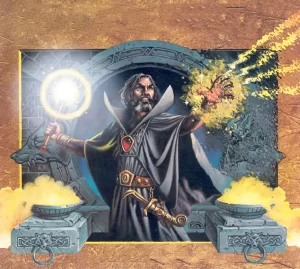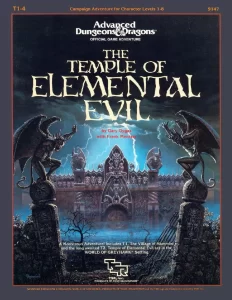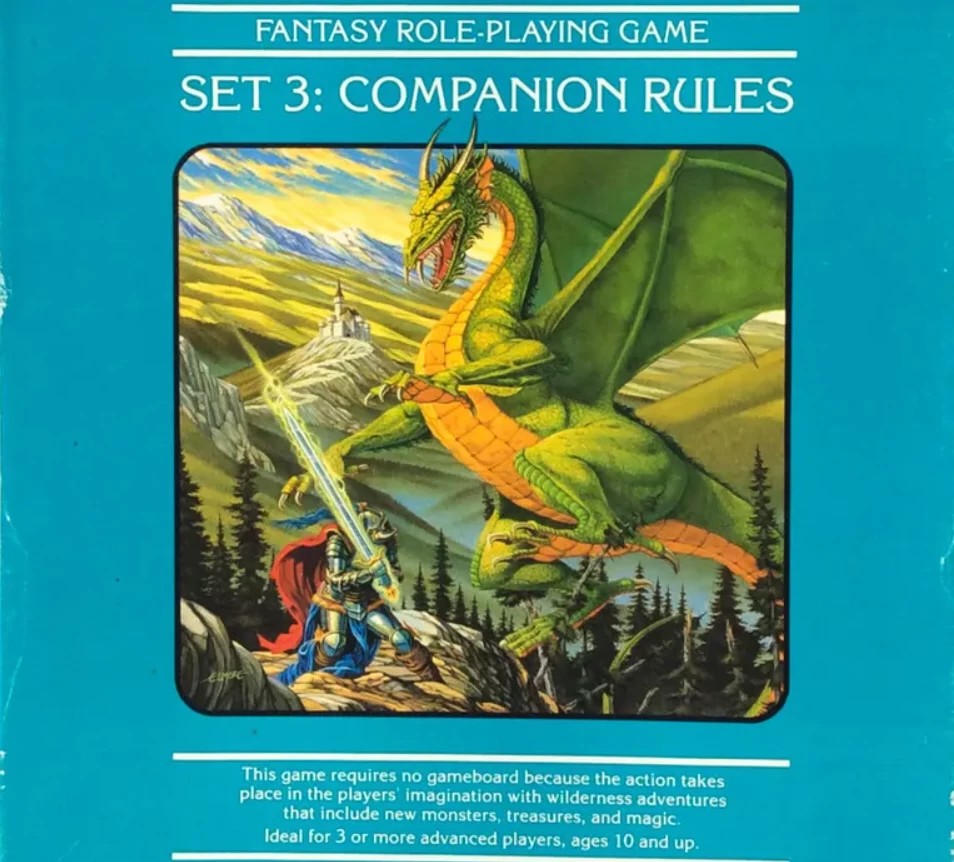
The "Mass Combat" rules were part of the Dungeons & Dragons Companion Set, also called "War Machine" which was released as part of the Basic D&D product line. These rules were designed to handle large-scale battles and were introduced to allow players to engage in wars and command armies, something that wasn't thoroughly covered in the basic rule sets.
Dungeons & Dragons has long captivated players with its intricate role-playing and combat mechanics, allowing adventurers to face foes in tense, personal confrontations. However, the scope of conflict can sometimes expand, necessitating the command of armies and engagement in epic battles. The "Mass Combat" rules introduced in the Dungeons & Dragons Companion Set provide the necessary framework for these grand encounters, allowing players to orchestrate large-scale battles that can shape the fate of entire kingdoms.
The introduction of Mass Combat rules marked a significant evolution in the gameplay experience of Dungeons & Dragons, transitioning from dungeon crawls and small skirmishes to the strategic manipulation of large-scale conflicts. This expansion into broader military engagements not only offered a new layer of gameplay but also deepened the narrative potential of the game. Players could now see their characters evolve from solitary adventurers or small-party heroes into generals and leaders, whose decisions could lead to the rise or fall of cities and nations. Such developments made the game not just a series of battles and loot-gathering exercises, but also a complex narrative of political and military strategy, diplomacy, and kingdom management.
Moreover, the Mass Combat system introduced unique challenges and opportunities for creative problem-solving. Players needed to think critically about logistics, such as the movement of troops, supply lines, and the strategic importance of geographical features. The inclusion of various military units-ranging from infantry and cavalry to siege engines and spellcasters-allowed for rich, tactical diversity that required players to plan their engagements carefully, considering not only their immediate tactical advantages but also their long-term strategic goals. This holistic approach to warfare in D&D campaigns helped bridge the gap between traditional tabletop role-playing elements and the grand strategy genre of gaming, enriching the overall depth and engagement of the game.
You can play the Mass Combat right now! War Machine Mass Combat
Scale and Representation
Central to the Mass Combat system is the concept of scale. Unlike traditional encounters, where figures or tokens represent individual combatants, Mass Combat uses these to symbolize entire units. Depending on the scenario, one figure could represent a group ranging from a small squad to hundreds of soldiers. This abstraction allows players to manage vast armies efficiently without diminishing the grandeur of massive military engagements.
This scaling system effectively translates the expansive, chaotic nature of battlefield engagements into a manageable and strategically engaging tabletop experience. By abstracting the individual into the collective, players can focus on broader tactical decisions rather than the minutiae of individual actions during combat. This abstraction also serves a narrative purpose, highlighting the role of the characters as leaders and strategists who must consider the welfare and effective use of their troops to achieve objectives. It lends a realistic touch to the proceedings, as real-world commanders often deal with units and battalions rather than individual soldiers, focusing on movements and outcomes on a larger scale.
Furthermore, the scale of representation in Mass Combat facilitates a diverse array of tactical scenarios that can be adapted to different historical or fantastical settings within the D&D universe. Whether orchestrating a defense against a marauding orc horde, leading a cavalry charge against a dragon's army, or laying siege to an ancient fortified city, the scale at which these battles are conducted invites an immersive depth to gameplay. This versatility ensures that each campaign can tailor its approach to warfare, allowing DMs and players to craft epic narratives that reflect both the prowess and the leadership qualities of their characters. This level of customization makes each battle not just a test of might, but a profound expression of the campaign's larger story and the characters' places within it.
Turn Structure and Phases
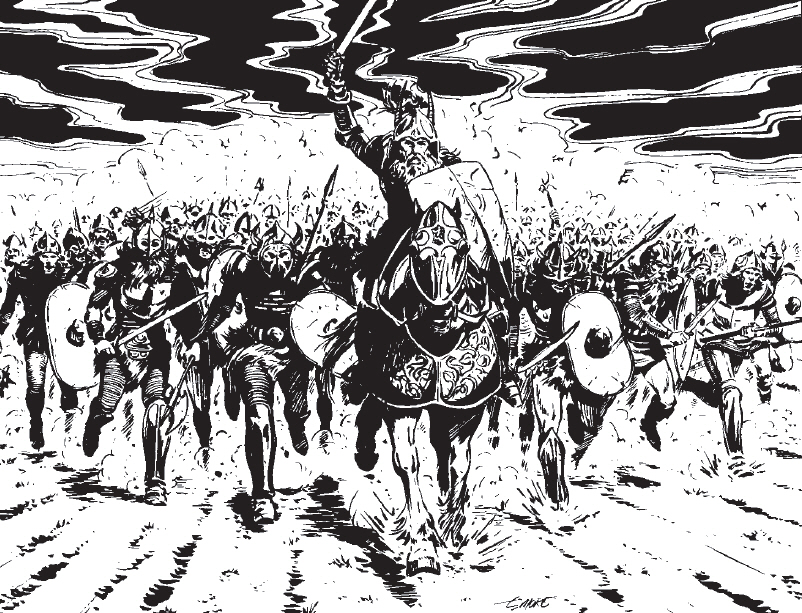
The Turn Structure and Phases of the Mass Combat system in Dungeons & Dragons are meticulously designed to capture the complexity and flow of large-scale battles, offering a structured approach that guides players through the various stages of conflict. This structure helps in organizing the game into distinct segments, each of which plays a critical role in the unfolding battle. Here's a detailed look at each phase:
1. Initiative Phase
This phase determines the order of play, which is crucial in dictating the pace and strategy of the battle. Unlike smaller skirmishes where individual initiative might dictate the order, in Mass Combat, initiative might be determined by the leaders' command abilities or other factors like army morale and readiness. The higher the initiative score, the earlier the unit can act in the turn, allowing for strategic advantages in positioning and execution of battle plans.
2. Movement Phase
During this phase, all units on the battlefield can move according to their designated movement rates. Terrain plays a significant role here, as different types can impact movement speed and efficiency. For example, heavy infantry may move slower through forested or mountainous terrain than on open plains. Strategic movement is key, as positioning can affect the outcomes of subsequent phases, especially for units with specific range or area-of-effect abilities.
3. Missile Phase
Units equipped with ranged weapons, such as archers or artillery, can perform attacks during this phase. This allows for early engagement before the units physically clash, and effective use of missile troops can significantly weaken the enemy before melee combat begins. Range, line of sight, and specific abilities of the missile units come into play, making this phase tactical in terms of positioning and target prioritization.
4. Melee Phase
This is the phase where direct combat occurs between units in proximity. It involves all aspects of hand-to-hand combat, utilizing the combat mechanics of D&D to resolve battles. Factors like the unit's attack capabilities, defensive strength, special abilities, and bonuses provided by leaders or terrain are considered to calculate the outcomes of these confrontations.
5. Morale Phase
Morale checks are crucial and reflect the psychological state of the troops during battle. Units may need to make morale checks when they suffer heavy casualties, witness the fall of a leader, or face overwhelming odds. Failing a morale check can lead to units breaking and fleeing, which can turn the tide of battle. Leaders and certain troop types might have abilities to boost morale or resist morale failures.
6. Magic Phase
Spellcasters play their role in this phase, where magic can be used to influence the battle on a large scale. Spells might heal units, boost their abilities, cause direct damage, or manipulate the battlefield itself (such as creating barriers or changing terrain). The strategic use of magic can be game-changing, making this phase one of the most dynamic.
7. End Phase
This phase wraps up the turn, resolving any effects that last until the end of the turn, adjusting the positions of units, and setting the stage for the next round of combat. It's a moment to assess the current state of the battlefield, plan for the next moves, and adapt strategies based on the unfolding dynamics of the conflict.
By breaking down each turn into these distinct phases, the Mass Combat rules allow for a deep, tactical gameplay experience that challenges players to think as commanders of armies, not just individual heroes. This structure not only keeps the game organized but also mirrors the complexity and layered decision-making inherent in managing large-scale conflicts.
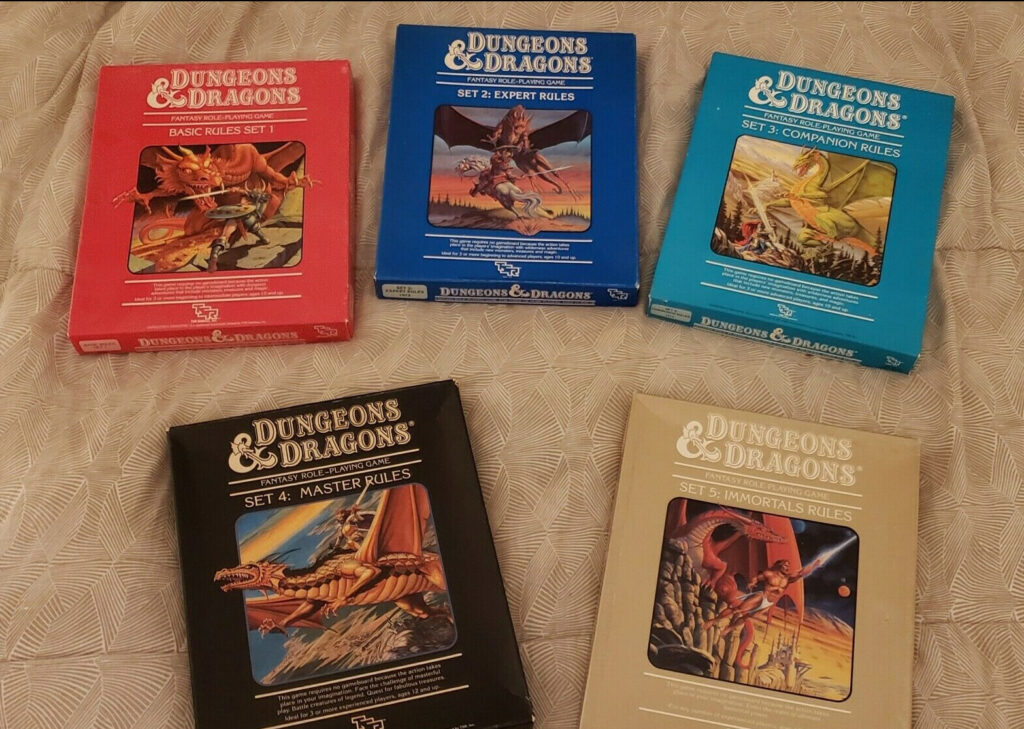
Strategic Depth in Combat
The "Mass Combat" rules in the Dungeons & Dragons Companion Set introduce a sophisticated approach to large-scale warfare that transcends simple dice rolls, integrating detailed tactical planning and strategic execution. Here's an in-depth look at the elements that contribute to this complexity:
1. Types of Troops
In Mass Combat, the composition of your forces is critical. The system categorizes units into different types like infantry, cavalry, archers, and specialized units including spellcasters and siege engines. Each type has distinct combat roles and capabilities. For example, cavalry units excel in rapid movement and flanking maneuvers, while archers can initiate combat from a distance, softening the enemy before direct engagement. The effectiveness of these units in battle hinges on how they are utilized within the strategic framework set by the rules.
2. Equipment and Arms
Troop effectiveness is heavily influenced by their equipment and armaments. The Companion Set rules specify how armor and weapon types impact unit performance in battle. Heavily armored units may endure more damage but could be hindered by difficult terrain or slower movement speeds. In contrast, lightly armored units offer greater mobility, crucial for executing flanking or retreating maneuvers. Weapons vary in range and impact, affecting how units engage in combat and fulfill their battlefield roles.
3. Formation and Tactics
Strategic formation of troops is essential in Mass Combat. Formations such as phalanxes or shield walls bolster defensive capabilities but may limit offensive mobility. Utilizing skirmish lines or loose formations can enhance a unit's responsiveness and coverage of the battlefield. Commanders must adapt their unit formations to the terrain and evolving tactical situations, making decisions that could either exploit enemy weaknesses or compensate for their own vulnerabilities.
4. Leadership and Command
Leadership plays a pivotal role in Mass Combat. Commanders, represented by player characters or significant NPCs, can significantly influence the morale and effectiveness of their troops. Their leadership skills can result in tactical bonuses such as improved attack rolls or defensive stances, and their decisions are crucial during morale checks where the will of the troops is tested. Effective command can rally a faltering unit or strategically withdraw forces to regroup and counterattack.
5. Terrain as a Strategic Factor
The terrain of the battlefield is a critical strategic element in Mass Combat. High ground offers tactical advantages like increased visibility and range, particularly beneficial for archers and spellcasters. Conversely, difficult terrains such as forests or swamps can impede movement and disrupt formations, introducing additional challenges and opportunities for savvy commanders.
6. Interaction and Dynamic Changes
The dynamic nature of the battlefield means that commanders must be adept at adjusting their strategies in response to sudden changes-enemy movements, weather conditions, or the unexpected arrival of reinforcements. The ability to swiftly adapt to these variables can be the difference between victory and defeat, emphasizing the need for strategic foresight and flexibility.
Integrating these elements, the Mass Combat system in the Dungeons & Dragons Companion Set offers a richly complex and engaging gameplay experience. It challenges players to think like commanders, blending tactical acumen with strategic foresight to manage large-scale battles effectively. This system not only deepens the combat experience but also enhances the narrative aspect of campaigns, allowing players and Dungeon Masters to explore the broader implications of warfare in their adventure worlds.
The Role of Magic
In Mass Combat, magic scales up to affect swathes of the battlefield. Wizards and clerics can cast spells that decimate ranks of enemies or bolster their own forces. This phase of combat underscores the potent and game-changing nature of magic within the larger context of war.
Siege Warfare: The Pinnacle of Strategy
For those campaigns that delve into the nitty-gritty of medieval warfare, the Mass Combat rules also extend to sieges, complete with mechanics for using siege engines like catapults and trebuchets, and tactics for storming or defending fortresses. This addition not only enriches the strategic gameplay but also provides a historical context that enhances the realism and depth of the narrative.
Integration with Traditional Role-Playing
What sets D&D's Mass Combat rules apart is their integration with the game's core role-playing elements. Heroes can lead armies, partake in pivotal duels, or undertake perilous missions behind enemy lines during a battle. This seamless blend ensures that the individual heroics that define D&D are not lost, even in the midst of war.
The Mass Combat rules from the D&D Companion Set transform the game from a series of small skirmishes to the realm of epic warfare. Mastering these rules can add a rich layer of strategic gameplay to your campaigns, offering a way to test your leadership and tactical acumen. Whether you are a seasoned dungeon master or a strategic-minded player, engaging with these rules can bring an exciting new dimension to your D&D adventures.





